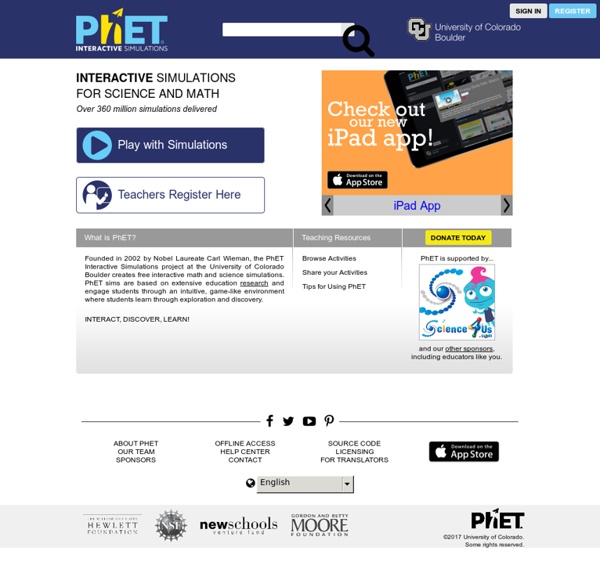



Physics Classroom Virtual Microscope The Virtual Microscope is a NASA-funded project that provides simulated scientific instrumentation for students and researchers worldwide as part of NASA's Virtual Laboratory initiative. This site serves as home base for the Imaging Technology Group's contributions to that project—namely virtual microscopes and the multi-dimensional, high-resolution image datasets they view. Currently we provide 90 samples totaling over 62 gigapixels of image data. The Virtual Microscope, which is available for free download supports functionality from electron, light, and scanning probe microscopes, datasets for these instruments, training materials to learn more about microscopy, and other related tools. The project is open source and the code is available on Sourceforge. Our Virtual Instruments The virtual microscope aims to present the user with a method for exploring these pre-captured image data as if they were using the real instrument in real-time. Microscope Training Read more about ITG
All Experiments | Practical Physics This website is for teachers of physics in schools and colleges. It is a collection of experiments that demonstrate a wide range of physical concepts and processes. Some of the experiments can be used as starting-points for investigations or for enhancement activities. Physics is a practical science. Good quality, appropriate physics experiments and investigations are the key to enhanced learning, and clarification and consolidation of theory. We have published a new set of resources to support the teaching of practical science for Key Stages 3-5.
Physics Flash Animations We have been increasingly using Flash animations for illustrating Physics content. This page provides access to those animations which may be of general interest. The animations will appear in a separate window. The animations are sorted by category, and the file size of each animation is included in the listing. Also included is the minimum version of the Flash player that is required; the player is available free from In addition, I have prepared a small tutorial in using Flash to do Physics animations. LInks to versions of these animations in other languages, other links, and license information appear towards the bottom of this page. The Animations There are 99 animations listed below. Other Languages and Links These animations have been translated into Catalan, Spanish and Basque: En aquest enllaç podeu trobar la versió al català de les animacions Flash de Física. These animations were written by David M.
Welcome to skoool.co.uk Physics Simulation with Java ChemEd DL Application: Models 360 loading... ../../tools/jsmol/j2s/core/package.js loading... ../../tools/jsmol/j2s/core/core.z.js -- required by ClazzNode loading... ../.. Jmol JavaScript applet jmolApplet0_object__008030860997344__ initializing Jmol getValue debug null Jmol getValue logLevel null Jmol getValue allowjavascript null AppletRegistry.checkIn(jmolApplet0_object__008030860997344__) viewerOptions: setting document base to " (C) 2012 Jmol Development Jmol Version: 14.0.2 2013-12-14 11:44: java.vendor: j2s java.version: JSmol 13.3.9 11/23/2013 10:51:10 PM os.name: j2s Access: ALL memory: 0.0/0.0 processors available: 1 useCommandThread: false appletId:jmolApplet0_object (signed) starting HoverWatcher_1 Jmol getValue emulate null defaults = "Jmol" Jmol getValue boxbgcolor null Jmol getValue bgcolor black backgroundColor = "black" Jmol getValue ANIMFRAMECallback null Jmol getValue APPLETREADYCallback Jmol. APPLETREADYCallback = "Jmol. Jmol getValue ATOMMOVEDCallback null language=en_US
Piramide Alimentare Italiana 10 Very Good Apps for Teaching Students about Outer Space August 31, 2015 Upon the recommendation of some of our readers here in EdTech and Learning, we went ahead and compiled this list of some popular iPad apps to use with students to teach them about the outer space. Using these applications will enable students to explore the space and learn about the different planets, constellations galaxies and stars making up our universe. Some of these apps provide 3D imagery and interactive visuals to enhance students learning and make it more engaging. 1- Exoplanet ‘The Exoplanet app is a highly visual and interactive catalogue of all known exoplanets. 2- Moon Globe ‘Hold the Moon in your hands. 3- SkyORB ‘SkyORB is a fast and lightweight astronomy app including a 3D star map, 3D planetarium, ephemeris with notifications, search engine, sun clock, point to sky, weather, and more. 4- Moon ‘Moon is a perfect resource to help you learn about the moon. 5- Star & Planet Finder 6- OSR Star Finder 7- Mars Globe ‘Take a tour of the mysterious Red Planet.
10 Apps & Sites for Promoting Healthy Eating and Fitness In all of my Best of the Web presentations I try to present resources for a wide variety of classroom settings and subject areas. Health and physical education resources are always included because of my personal interest in the field as well as its importance in giving students lifelong skills. Here are ten of my favorite resources for teaching and promoting health and fitness in schools. GoNoodle is a free service that is designed to promote physical fitness in a fun environment. GoNoodle features tons of free videos that lead students in short, 2-5 minutes, exercises. These are fun exercises like dancing that can be done in your classroom or at home with parents. One of the simple improvements that I made to my diet two years ago was removing sugar from my morning coffee (I never used cream). How Sugar Affects the Brain is a TED-Ed lesson through which students learn why sugary foods and beverages can become addictive and how the human body processes sugar.